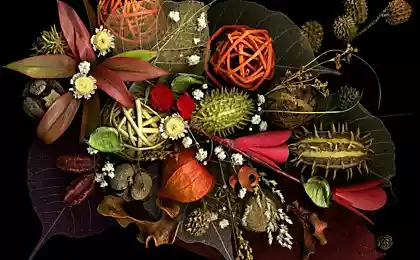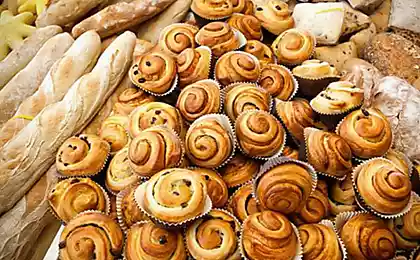591
The 15 most unusual, decorative grass
When we think about ornamental garden plants that just come to mind cereals. Meanwhile, they deserve a prominent place in the plant composition and beauty can compete with any other occupant of the garden.
However, in recent cereals are gaining popularity. And there really is a place to roam! There are over 200 different types of ornamental grasses that can be used in single crop or combined with other plants. They decorate rockeries and Alpine gardens, Lodge them at the pond and framed by their panicles edge of the flower beds.

Offer to meet with cereals for garden decoration, maybe these fluffy panicles will inspire you.
1. Golubyova the blue fescue (Festuca glauca) is a grass-blue fluffy hemispherical mounds up to 40 cm looks Very good on the background of rocks and streams, is a separate plant, and in single crop will not be bored.
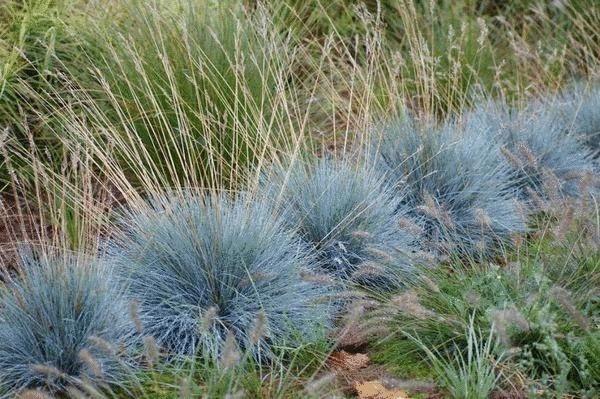
It's a perennial, planted seeds in spring or a winter. In the hole put a 3 seed over a distance of about 20 cm from each other. Calm feeling without shelter, but a very strong and growing rapidly, so every 2 years tufts of blue fescue should be divided for the upgrade of the plant.
2. Pogonatherum providenya this point, many may wonder, it is still possible that pogonatherum millet (Pogonatherum paniceum) is a house plant, often referred to as the "bamboo room" or "indoor cane". But in fact it is a cereal, it belongs to the family of grasses and is used for planting in tubs and large containers. For summer pots with pogonatherum it is possible to decorate the expanses of the garden, and in the area warmer and leave to overwinter in the soil.

In our latitudes it can be cultivated in the South of Russia, although the summer of 2014 was hot and in the middle lane. In this temperature regime pogonatherum feels good both day and night.
3. Setaria italianskaia species of Setaria (Setaria italica) is known to many of the millet, which is grown in some regions as a fodder plant. But not everyone knows that it is also very decorative. The large yellowish green foxtail or green drooping panicles that look great in the ensemble of plants and solos.
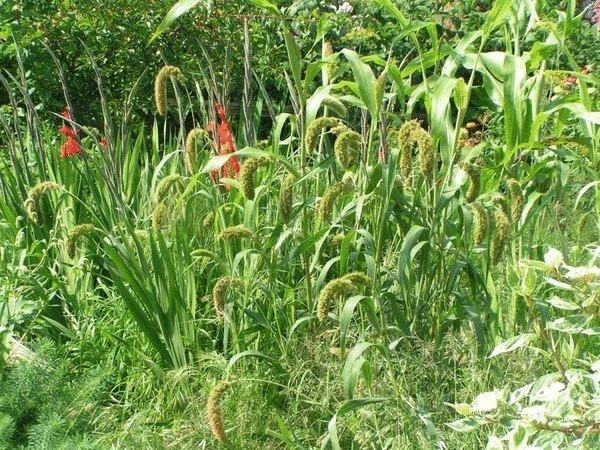
The second kind of setarii known to us as panic or foxtail, it has a brownish panicles smaller, growing right.
Bushes Setaria large-sometimes higher than 1 m. This decorative grass loves the heat and fertile soil. Drought tolerant, but watering is not less than the likes of the sun and fertility. The plant earned the love of design dry bouquets, as well dry or crumbles. Yes and vase life with other plants will at least look original.
4. Barley, drivetype maned barley (Hordeum jubatum) say he's majestic and playful. In my opinion, it is more than self-sufficient in the world not only cereals, but also many ornamental plants. It is perennial, but more often it is cultivated as an annual because of the property freeze solid in the winter. This ornamental grass forms a dense shrub to 50 cm tall with a scattering of shoots, which are arranged spikelets with very long awns.

At the time of flowering the awns pink-purple, and when dry up, become white. Under good conditions barley maned, not only will not freeze, but will provide an excellent self-seeding.

To know more about this amazing plant can be directly on the site our reader Natalia in her article "Barley maned".
5. Citadelrecords (Cortaderia), also known as the pampean grass, forms a spreading shrub bright with fluffy inflorescences at the ends. This cereal is very tall. Under favorable conditions, grows right up to 3 m, but also low-growing types do not less good. The main condition for the blooming — a lot of sun. Very unusual looks casual arrangement of Japanese pampas grass on the shore of the Crimea: "Elegant sultans panasci grass." But what prevents us to invite it in your garden world?


6. Pennisetum setinitialpolicies bristly forms bushes up to 1.5 m, depending on subspecies. Long-stemmed inflorescences are bright like fireworks.

I am really enjoying this plant in combination with evergreen trees or pine trees.

7. Pennisetum PPE, or decorative proceede one handsome man from the family of pennisetum — pennisetum PPE, perisomatic American, he's African millet. Decorative appearance has a direct dense panicle, and the leaves are brown-purple or bluish color.

Pearl millet is thermophilic, but tolerates lower temperatures. Use in mixed borders, or in group plantings. I like the grain in the vase life, and the dried plant retains the shape and color.

To meet pennisetum PPE in the article "Ornamental millet".
8. Perisomatic mohnatyj another perizomini, it is not like his American counterpart, but no less beautiful. This perennial plant grows strongly and quickly, so it's worth it to restrict. Its height can vary from 30 to 60 cm Leaves are thin and flat, and the spike-like panicles (to 10 cm). Golden spikelets surrounded by pinnately fibrous bristles, and why he seems "fuzzy".

View more of photo hairy peristediinae in comments Ludmila Uleyskaya.

9. Miscanthus Miscanthus forms a lush bushes up to 2 m Long leaves concealed in their bosoms playful Golden pink and Golden or silver paniculate inflorescences.
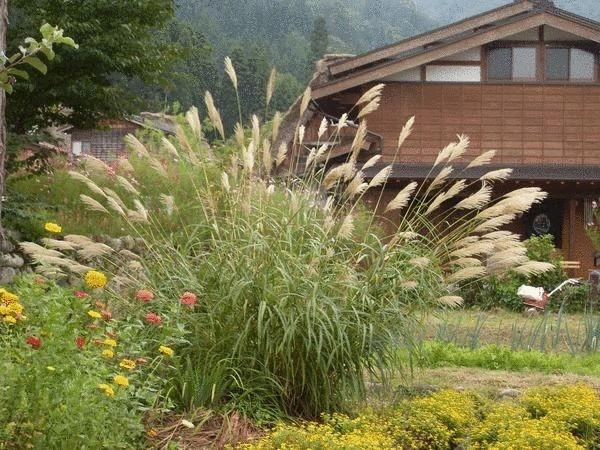
10. Sitecontact cute cereal truly lives up to its name: its small fluffy inflorescence really looks like a Bunny tail. Sitehost, lagurus ovate (Lagurus ovatus), can reach a height just over 50cm, themselves spicate inflorescences with a length of about 3-4 cm.

Like many gardeners, not only for elegance, but also for the highly ornamental in dry arrangements. This plant can grow in partial shade, which makes it possible to fit in places where other ornamental grasses be able to grow.
11. Sorghum dekorativnoye original annual grass inflorescence is in the form of a fancy dark brown loose spike with round grains. Sorghum leaves are broad, dark green, their mark up also allows for some unusual plant.

Used in group plantings, and single, in the form of a backdrop for dramatic winter arrangements. Sorghum normally carries cold and not demanding on the soil.
12. Feather krasivejshih as Prairie grass is loved by many, he gladly planted in mixed borders or breaking up the floral arrangements. Particularly unusual in landings look soft beautiful feather grass (Stipa pulcherrima).

Unusual pubescence from a distance looks like a silver crystal strings, enveloping the plant. Grows to a maximum height of 80 cm, and long thin spine, which reach a length of 50 cm.
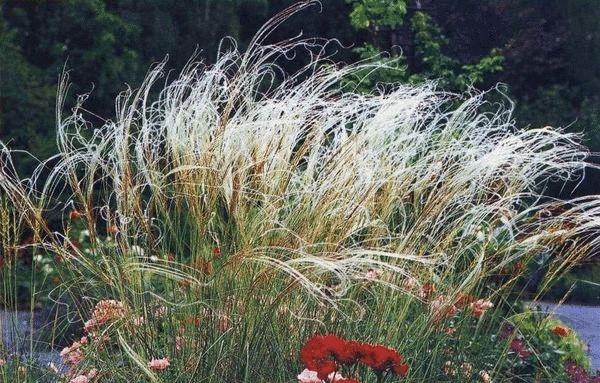
13. The ovsets Often ovsets viviparous viviparous (Helictotrichon sempervirens) confused with blue fescue. It's so confusing color and somewhat similar shape, but the bumps ovsets are a lot taller and more spreading.

Agree that this cereal is not only perfectly framed beds, but also goes well with all kinds of stones.

12. Chasmanthium shirokolistvennye latifolia (Chasmanthium latifolium), or wild oats, or plasmatronic, despite its apparent simplicity, looks very original with many plants and single plantings. Inflorescence and spikelets of this grass are flattened and arranged in the same plane. They hang from the stalk like an outlandish forged plate earrings.

With good moisture and enough sunlight grows to about 1.2 m height. Bloom begins in autumn, in September — October.
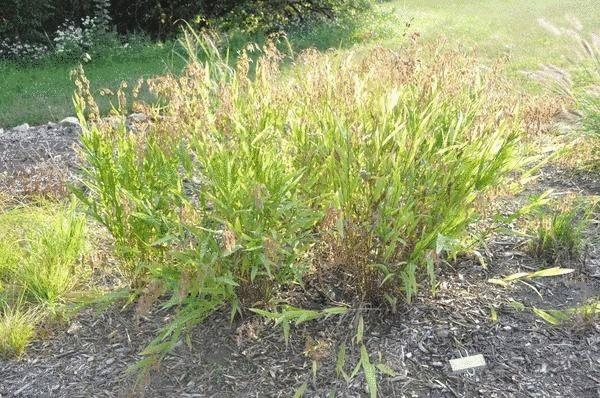
13. Imperata, tsilindricheskoi this cereal will not leave indifferent even the most demanding gardener. The leaves of Imperata cylindrica (Imperata cylindrica) thin, with bright red tips. By the fall reaches the peak of its decoration and fully painted in purple tones.
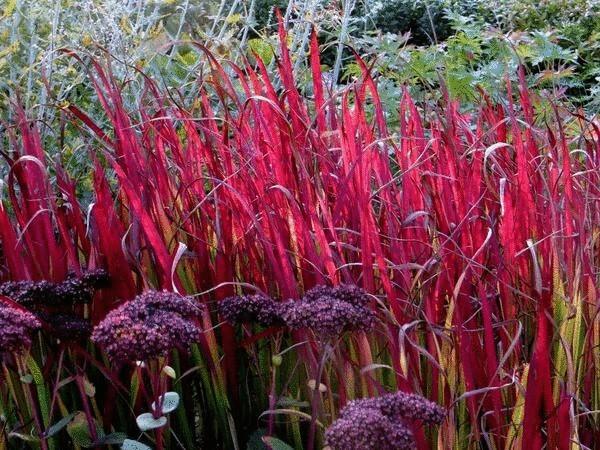
If you plant in the garden grains, and in the autumn he sad the time will never be empty. Unpretentious panicles grow until frost and even dry decorative remain. They will give a special charm and rustic Lodge and cabin style Chalet and the cottage, made in a modern style. published
Source: www.7dach.ru
However, in recent cereals are gaining popularity. And there really is a place to roam! There are over 200 different types of ornamental grasses that can be used in single crop or combined with other plants. They decorate rockeries and Alpine gardens, Lodge them at the pond and framed by their panicles edge of the flower beds.

Offer to meet with cereals for garden decoration, maybe these fluffy panicles will inspire you.
1. Golubyova the blue fescue (Festuca glauca) is a grass-blue fluffy hemispherical mounds up to 40 cm looks Very good on the background of rocks and streams, is a separate plant, and in single crop will not be bored.

It's a perennial, planted seeds in spring or a winter. In the hole put a 3 seed over a distance of about 20 cm from each other. Calm feeling without shelter, but a very strong and growing rapidly, so every 2 years tufts of blue fescue should be divided for the upgrade of the plant.
2. Pogonatherum providenya this point, many may wonder, it is still possible that pogonatherum millet (Pogonatherum paniceum) is a house plant, often referred to as the "bamboo room" or "indoor cane". But in fact it is a cereal, it belongs to the family of grasses and is used for planting in tubs and large containers. For summer pots with pogonatherum it is possible to decorate the expanses of the garden, and in the area warmer and leave to overwinter in the soil.

In our latitudes it can be cultivated in the South of Russia, although the summer of 2014 was hot and in the middle lane. In this temperature regime pogonatherum feels good both day and night.
3. Setaria italianskaia species of Setaria (Setaria italica) is known to many of the millet, which is grown in some regions as a fodder plant. But not everyone knows that it is also very decorative. The large yellowish green foxtail or green drooping panicles that look great in the ensemble of plants and solos.

The second kind of setarii known to us as panic or foxtail, it has a brownish panicles smaller, growing right.
Bushes Setaria large-sometimes higher than 1 m. This decorative grass loves the heat and fertile soil. Drought tolerant, but watering is not less than the likes of the sun and fertility. The plant earned the love of design dry bouquets, as well dry or crumbles. Yes and vase life with other plants will at least look original.
4. Barley, drivetype maned barley (Hordeum jubatum) say he's majestic and playful. In my opinion, it is more than self-sufficient in the world not only cereals, but also many ornamental plants. It is perennial, but more often it is cultivated as an annual because of the property freeze solid in the winter. This ornamental grass forms a dense shrub to 50 cm tall with a scattering of shoots, which are arranged spikelets with very long awns.

At the time of flowering the awns pink-purple, and when dry up, become white. Under good conditions barley maned, not only will not freeze, but will provide an excellent self-seeding.

To know more about this amazing plant can be directly on the site our reader Natalia in her article "Barley maned".
5. Citadelrecords (Cortaderia), also known as the pampean grass, forms a spreading shrub bright with fluffy inflorescences at the ends. This cereal is very tall. Under favorable conditions, grows right up to 3 m, but also low-growing types do not less good. The main condition for the blooming — a lot of sun. Very unusual looks casual arrangement of Japanese pampas grass on the shore of the Crimea: "Elegant sultans panasci grass." But what prevents us to invite it in your garden world?


6. Pennisetum setinitialpolicies bristly forms bushes up to 1.5 m, depending on subspecies. Long-stemmed inflorescences are bright like fireworks.

I am really enjoying this plant in combination with evergreen trees or pine trees.

7. Pennisetum PPE, or decorative proceede one handsome man from the family of pennisetum — pennisetum PPE, perisomatic American, he's African millet. Decorative appearance has a direct dense panicle, and the leaves are brown-purple or bluish color.

Pearl millet is thermophilic, but tolerates lower temperatures. Use in mixed borders, or in group plantings. I like the grain in the vase life, and the dried plant retains the shape and color.

To meet pennisetum PPE in the article "Ornamental millet".
8. Perisomatic mohnatyj another perizomini, it is not like his American counterpart, but no less beautiful. This perennial plant grows strongly and quickly, so it's worth it to restrict. Its height can vary from 30 to 60 cm Leaves are thin and flat, and the spike-like panicles (to 10 cm). Golden spikelets surrounded by pinnately fibrous bristles, and why he seems "fuzzy".

View more of photo hairy peristediinae in comments Ludmila Uleyskaya.

9. Miscanthus Miscanthus forms a lush bushes up to 2 m Long leaves concealed in their bosoms playful Golden pink and Golden or silver paniculate inflorescences.

10. Sitecontact cute cereal truly lives up to its name: its small fluffy inflorescence really looks like a Bunny tail. Sitehost, lagurus ovate (Lagurus ovatus), can reach a height just over 50cm, themselves spicate inflorescences with a length of about 3-4 cm.

Like many gardeners, not only for elegance, but also for the highly ornamental in dry arrangements. This plant can grow in partial shade, which makes it possible to fit in places where other ornamental grasses be able to grow.
11. Sorghum dekorativnoye original annual grass inflorescence is in the form of a fancy dark brown loose spike with round grains. Sorghum leaves are broad, dark green, their mark up also allows for some unusual plant.

Used in group plantings, and single, in the form of a backdrop for dramatic winter arrangements. Sorghum normally carries cold and not demanding on the soil.
12. Feather krasivejshih as Prairie grass is loved by many, he gladly planted in mixed borders or breaking up the floral arrangements. Particularly unusual in landings look soft beautiful feather grass (Stipa pulcherrima).

Unusual pubescence from a distance looks like a silver crystal strings, enveloping the plant. Grows to a maximum height of 80 cm, and long thin spine, which reach a length of 50 cm.

13. The ovsets Often ovsets viviparous viviparous (Helictotrichon sempervirens) confused with blue fescue. It's so confusing color and somewhat similar shape, but the bumps ovsets are a lot taller and more spreading.

Agree that this cereal is not only perfectly framed beds, but also goes well with all kinds of stones.

12. Chasmanthium shirokolistvennye latifolia (Chasmanthium latifolium), or wild oats, or plasmatronic, despite its apparent simplicity, looks very original with many plants and single plantings. Inflorescence and spikelets of this grass are flattened and arranged in the same plane. They hang from the stalk like an outlandish forged plate earrings.

With good moisture and enough sunlight grows to about 1.2 m height. Bloom begins in autumn, in September — October.

13. Imperata, tsilindricheskoi this cereal will not leave indifferent even the most demanding gardener. The leaves of Imperata cylindrica (Imperata cylindrica) thin, with bright red tips. By the fall reaches the peak of its decoration and fully painted in purple tones.

If you plant in the garden grains, and in the autumn he sad the time will never be empty. Unpretentious panicles grow until frost and even dry decorative remain. They will give a special charm and rustic Lodge and cabin style Chalet and the cottage, made in a modern style. published
Source: www.7dach.ru






